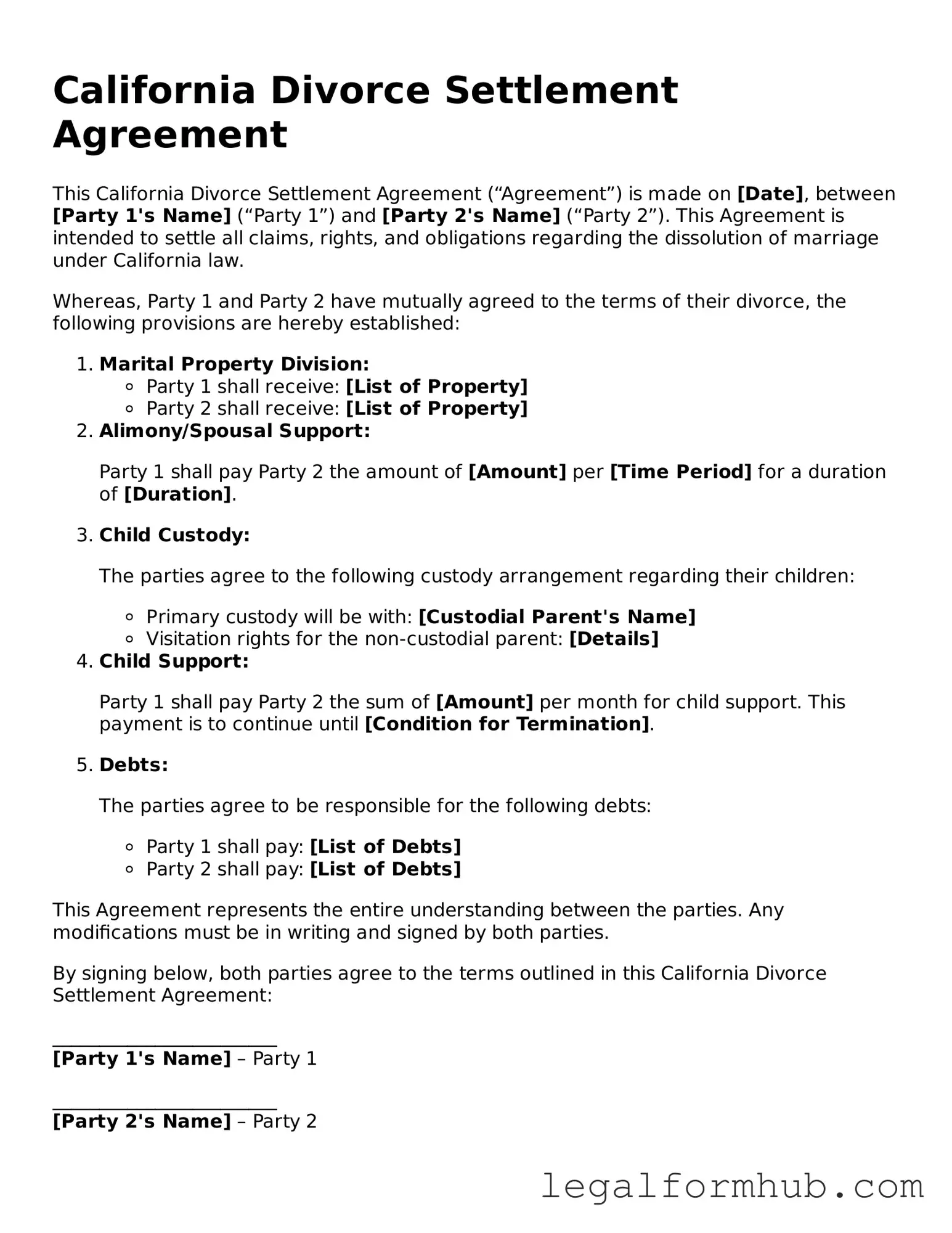The California Divorce Settlement Agreement form is similar to the Marital Settlement Agreement. Both documents outline the terms of a divorce, including the division of assets, debts, and child custody arrangements. They serve as a mutual agreement between spouses, ensuring that both parties understand their rights and responsibilities following the dissolution of marriage. While the Marital Settlement Agreement is often used in uncontested divorces, it can also be adapted for cases where negotiation is necessary.
Another document that shares similarities is the Separation Agreement. This form is utilized when couples decide to live apart but are not yet ready to file for divorce. Like the Divorce Settlement Agreement, it details the division of property, child support, and other relevant issues. The Separation Agreement can serve as a precursor to the divorce process, helping couples establish clear terms while they consider their long-term options.
The Child Custody Agreement is closely related as well. This document specifically addresses the custody and visitation arrangements for children involved in a divorce. It complements the Divorce Settlement Agreement by focusing solely on the welfare of the children, ensuring that their needs are prioritized. Both documents work together to create a comprehensive plan for family dynamics post-divorce.
The Property Settlement Agreement is another similar document. This form specifically outlines how marital property will be divided between spouses. While the Divorce Settlement Agreement covers a broader range of issues, the Property Settlement Agreement focuses on the tangible and intangible assets, ensuring that both parties receive a fair distribution of their belongings.
If you are looking to access crucial documents like the EDD DE 2501 form, you can easily start by visiting Fill PDF Forms, which will guide you through the process of obtaining the necessary forms for your needs.
The Parenting Plan is akin to the Child Custody Agreement but goes a step further by detailing how parents will raise their children after separation. It includes provisions for education, healthcare, and extracurricular activities, ensuring that both parents are on the same page regarding their children's upbringing. This document can be included as part of the Divorce Settlement Agreement to provide a more holistic approach to co-parenting.
The Financial Disclosure Statement is also relevant in this context. This document requires both spouses to disclose their financial information, including income, expenses, assets, and debts. Transparency is key in the divorce process, and this statement helps ensure that both parties have a clear understanding of their financial situation, which is essential for fair negotiations in the Divorce Settlement Agreement.
Similarly, the Spousal Support Agreement outlines the terms of alimony or spousal support that one partner may be required to pay to the other post-divorce. This document can be included in the Divorce Settlement Agreement to clarify the financial responsibilities of each party, ensuring that both spouses have a clear understanding of their obligations.
The Quitclaim Deed is another document that may accompany the Divorce Settlement Agreement, particularly when real estate is involved. This legal instrument allows one spouse to transfer their interest in a property to the other. It ensures that ownership is clearly defined and can help prevent future disputes over property rights after the divorce is finalized.
Lastly, the Divorce Decree itself is a crucial document that finalizes the divorce process. While the Divorce Settlement Agreement outlines the terms, the Divorce Decree is the official court order that makes those terms legally binding. It serves as the final step in the divorce process, ensuring that all agreements reached in the settlement are enforceable by law.
